How a Transparent Fish May Help Decode the Brain
An outspoken Harvard neuroscientist is tackling the wondrous challenge of understanding the workings of the brain
/https://tf-cmsv2-smithsonianmag-media.s3.amazonaws.com/filer/95/7d/957d848f-dbe3-4e0e-99ce-2a2e85e651ae/julaug2015_h02_zebrafish.jpg)
In televised remarks from the East Room of the White House on April 2, 2013, President Obama unveiled a scientific mission as grand as the Apollo program. The goal wasn’t outer space, but a frontier every bit as bewitching: the human brain. Obama challenged the nation’s “most imaginative and effective researchers” to map in real time the flickerings of all 100 billion nerve cells in the brain of a living person, a voyage deep into the neural cosmos never attempted at so fine a scale. A panoramic view of electric pulses pinballing across the brain could lead to major new understandings of how we think, remember and learn, and how ills from autism to Alzheimer’s rewire our mental circuitry. “We have a chance to improve the lives of not just millions,” the president said, “but billions of people on this planet.”
The next month, six miles from the White House, a Harvard professor named Florian Engert grabbed a mic and, in front of the nation’s top neuroscientists, declared Obama’s effort essentially futile. “We have those data now,” said Engert, who, in a room full of professorial blazers and cardigans, was wearing a muscle shirt that afforded ample views of his bulging biceps. “We discovered they’re actually not all that useful.” (“I think whole-brain imaging is just a bunch of bull----,” is how he put it to me later.) To the other researchers, he must have sounded like a traitor.
Engert, who is 48, was basically the first person on the planet to observe a brain in the wall-to-wall way Obama envisioned. He and his colleagues had done it with a sci-fi-worthy experiment that recorded every blip of brain activity in a transparent baby zebrafish, a landmark feat published just a year earlier in the marquee scientific journal Nature. For Engert to suggest that the president’s brain quest was bunk was a bit like John Glenn returning from orbit and telling JFK not to bother with a lunar landing.
“He should be an advocate,” says Miyoung Chun, a molecular geneticist and executive at the Kavli Foundation, a leading backer of neuroscience research. “Many other neuroscientists are celebrating what he was able to accomplish, but he himself is shutting it down.”
But Engert was trying to make a point: Whole-brain recording, in his view, is not necessarily the best path to new discoveries about the three pounds of flesh between our ears. “You can find patterns, sequences, clusters, correlations and areas of blips. And then what?” he told me. It’s a lot of data without a lot of understanding.
The White House—and many scientists—were pinning too many hopes, Engert thought, on too narrow an idea of how to understand the brain. At stake in his critique are questions not just of methods, but of the very goals of neuroscience. How much should we expect to grasp in our lifetimes about phenomena like memory, sleep and consciousness? What should the field’s highest calling be? Should it be cures for disease, or are other lines of inquiry just as worthy?
Engert relishes controversy, especially when he’s at its center. It’s a dangerous game for an academic, but his science saves him. This past September, the Obama administration awarded him one of the new brain mission’s largest grants, anointing him a leader of the very effort he can’t stop dissing.
**********
Thousands if not millions of brain cells have to talk to one another for a person to perform even the most basic task, like lifting a glass of water. The cells exchange messages in the form of electrical pulses, which race at millisecond speeds along networks of fibers spanning every region of the brain. At almost every moment, that is, the brain’s Beijing is on the phone to its Helsinki, with La Paz and Kampala patched in on conference. These circuits of activity are thought to underlie some of the brain’s greatest mysteries: how we store and recall memories; how we feel emotion; how neurons encode data from our senses and how they draw on that data to orchestrate behavior; how those circuits change in people with psychiatric and neurological disease.
Until very recently, scientists could record from only a few hundred neurons at a time, even in lab animals. They did it by sinking electrodes into each of those cells. But the more cells you try to track at once, the greater your risk of killing the animal or shorting your electronics. Sure, functional MRI machines image the whole brain, but they track blood oxygen levels, not electrical activity, and the resolution is far too crude for the study of circuits at the cellular level. Which is why Engert’s 2012 Nature paper on the eyelash-size baby zebrafish landed with a whale of a splash. His team had found a way to record an animal’s entire brain with the sweep of an fMRI and the cell-by-cell precision of electrodes.
Zebrafish are freshwater minnows native to streams that burble through rice paddies along the Ganges, in India and Bangladesh. In the West, the blue and gold striped fish are better known as your basic starter aquarium species. In the 1970s, scientists saw in these inconspicuous creatures the makings of the next big lab animal. Zebrafish breed fast, cost little and have genes that are easy to manipulate. And for the first few days of their lives, zebrafish, brains to tail, are see-through. To read the minds of baby zebrafish, scientists later realized, all you had to do was look.
After years of trial and error, Engert and his lab members pulled off a wild experiment. Engert code-named it “Fish in The Matrix,” after the sci-fi film trilogy about people who think they’re leading ordinary lives but are in fact sealed in pods, their brains wired to a virtual-reality machine. The experiment took aim at a basic question: What happens in the brains of baby zebrafish as they learn?
At first, it wasn’t clear anyone could teach a baby zebrafish anything. Engert and his colleagues tried for years to trigger lasting changes in behavior by giving the fish mild shocks or rewarding them with alcohol or cocaine, all to no avail. But, by instinct, zebrafish swim against a current, a reflex that keeps them from getting washed into a rice paddy or, worse, out to sea. What if scientists could make the fish think that this hard-wired reflex wasn’t working right? Would the fish learn to adapt?
The researchers obtained a line of genetically engineered zebrafish whose neurons flash green when they fire; the cells produce a fluorescent dye that glows brighter in the presence of calcium ions, which flow in when the cell is firing. The fish had to be motionless, so the green flashes wouldn’t blur under a microscope, and still have the illusion of freedom.
Engert and two of his postdocs, Misha Ahrens and Ruben Portugues, paralyzed the fish with a snake-venom toxin and suspended it in water in a clear petri dish. To mimic the visual experience of swimming in a stream, they set a projection screen under the petri dish and displayed a set of moving bars. From electrodes patched to nerves in the fish’s tail, the researchers sensed what the brain was telling the tail to do, even though the tail itself couldn’t actually move. A computer slowed the bars when the fish flicked—or thought it was flicking—its tail, so it would get a visual cue that it was successfully holding its place in the moving water.
Then came the brainwashing. When the fish “swam,” the researchers slowed the bars too much or reversed their course, with the goal of making the animal think its tail had become super-strong. Or they made the bars slow too little, duping the fish into thinking its tail was abnormally weak. In each case, the fish compensated, either decreasing its tail flicks or increasing them: whatever it took to stay put in the virtual stream. Not only did zebrafish after zebrafish recalibrate their tail flicks, they later remembered to do so: They learned. When the scientists gave the fish a ten-second break and then returned the bar speed to its realistic setting, the fish initially lashed their tails as though they were still either too strong or too weak.
Videos of the fish’s 100,000 neurons, filmed through a high-powered microscope, show fields of glittering green, twinkling in areas associated with vision, movement and learning. Of particular note was a set of brain cells that had no clear tie to vision or movement, and that flashed only when the fish realized their tails were weaker or stronger than expected. Engert theorized that these cells played a role in “surprise” or “error detection.”
The team’s paper notched a number of breakthroughs, but it was the technical marvel of brainwide recording that drew the most attention. Never before had scientists imaged activity in all the neurons of a living animal. “The technology was there to do that experiment, but no one had,” Joseph Fetcho, a Cornell professor who made many of the seminal advances in zebrafish neuroscience, told me. “Only Florian was nutty enough. It’s sort of his whole, ‘Go big or go home’ approach to life.”
**********
When I showed up at Engert’s lab on the second floor of Harvard’s BioLabs building, he greeted me and said, “I’m going to show you something really funny.” He led me out of the building and down an asphalt path to a side door of the Harvard Divinity School. A laminated card on the door frame said, “No Smoking Within 25 Feet of Building Entrance.” But on the door itself was another sign: “Not an Entrance.”
He watched my face to make sure I registered how the second sign could be reasonably read to negate the first. Then he burst into a tittering, high-pitched laugh. When I asked if I could take a photo, he eagerly assented, making sure both signs were still visible. Then he lit up an American Spirit cigarette, blew smoke at the eaves of Divinity Hall, and flashed the camera his best naughty-boy smile.
Engert was enacting for me, in miniature, one of his favorite public personas: the rake in a comedy of manners, the charmer whose bad behavior is so finally harmless that only his accusers look foolish in the end. The stories he likes to tell about himself all involve narrow escapes from one variety or another of fussbudget or prude. Harvard, with its hallowed reputation, big egos and tweedy fashion imperatives, offers him a particularly effective foil. When colleagues complained about his skating through the BioLabs building, maintenance staff put up “No Rollerblading” signs. They came down after he made tenure.
I noticed a wood-handled leather whip behind Engert’s desk one afternoon, and when I asked what it was doing there, he grabbed it, sprung to his feet and unleashed an earsplitting crack that launched a pair of startled grad students out of their seats. “You see how they react, how they are suddenly working faster?” he joked. In truth, someone gave it to him in irony. Engert is known for the very long leash he gives lab members. The most inventive science, he feels, comes in an environment in which brilliant independent thinkers have free rein to chase their most fanciful ideas, even if they fail.
Adam Kampff, an undergraduate astrophysics major, was weighing a switch to neuroscience for a PhD in 2002 when Engert gave him a Harvard credit card and told him to build the lab a two-photon microscope, a contraption of lasers and mirrors whose assembly requires a magnum of technical dexterity. The microscopes, which fire two pulses of infrared light at a single point, are valued for the clean images they take of fluorescent-dyed cells, like the ones that flash green in genetically modified zebrafish.
Engert then jetted to Berkeley, where he’d just finished a postdoctoral fellowship, so he could ride his Honda Shadow cruiser motorcycle cross-country back to Cambridge.
“While he was away I think I spent about $300,000,” Kampff told me. “Looking back, you go, ‘Wait, that’s crazy,’” said Kampff, who stayed for a PhD and postdoc with Engert and is now a lab director at the Sainsbury Wellcome Centre, a neuroscience research institute at University College London. “But it was the best thing that ever happened to me.”
For the 2009 public talk that Engert delivered as part of his tenure bid, a colleague advised him to skip the muscle shirt and dress up. Engert did—in lederhosen. When he took to the stage in leather shorts and knee socks, he assured the packed lecture hall that contrary to appearances, he had taken his colleague’s advice to heart. “This is the formal dress of the Bavarian tribes,” Engert said, as the room flooded with laughter, “and it’s a sign of the highest respect for any audience.”
**********
Florian was once a quiet, comic book-devouring homebody, says his sister Katharina. The two grew up in Munich’s Schwabing district, a Bohemian enclave animated by students from nearby universities. Their father was a baker who founded a local ice-cream chain, and their mother sold her family’s hair salon to raise the children. For a spell they all lived above the flagship Engert Ice. Kids were always coming around, but “you never knew if they were your friends because of the ice cream or because they liked you,” says Katharina, now a primary care doctor in Munich.
When Engert was in high school, their father, anxious about his English grades, sent him to London for a year of language study. Engert came home extroverted and self-assured. He soon found himself in a crowd of self-styled cold war nihilists who believed in living for the moment because a nuclear catastrophe was apt to wipe out the human race before any of them reached 30.
Big questions about the origins of the universe excited Engert, and physics seemed to have answers. By his senior year at Munich’s Ludwig Maximilians University, however, the field’s two pillars—elementary particles and astrophysics—had come to feel “too detached from daily life,” he told me. His family’s next-door neighbor was a brain researcher, and he told Engert that neuroscience needed physicists, that the field’s future hinged on the invention of new tools to peer into the brain.
As a graduate student and postdoctoral researcher at the Max Planck Institute for Neurobiology outside Munich and at the University of California, Engert built gear for important discoveries into how neurons in rats and tadpoles change in response to visual and electrical stimulation—changes thought crucial to learning and memory. He spent two years designing a custom two-photon microscope whose laser, if mishandled, could zap retinas. In a typical gesture, Engert duct-taped the lab’s safety goggles to the wall and posted a sign above them that said, “Only for Wimps.”
His gift for juggling business and pleasure has fueled its share of intramural comment. In 2002, Mu-ming Poo, in whose lab Engert worked as a postdoc, wrote a letter lashing lab members for laziness. “There may be a few rare lucky fellows like Florian, who...can enjoy life for a while and still get a job offer from Harvard,” Poo wrote. “No one else in the lab has Florian’s luxury to play around.”
**********
The White House launched its neuroscience mission, known as the BRAIN Initiative (for Brain Research through Advancing Innovative Neurotechnologies), with a $100 million request to Congress. The National Institutes of Health awarded $46 million in BRAIN grants last fall, and agencies as disparate as the National Science Foundation, the Defense Advanced Research Projects Agency and the Food and Drug Administration are backing research aligned with the initiative’s goals. In the private sector, companies like Google, GE and GlaxoSmithKline have devoted more than $30 million to the mission.
Scientists involved with the effort envision a stepladder approach, working up from roundworms (300 neurons), baby zebrafish and fruit flies (100,000 each) to mice (75 million) and monkeys (6 billion for the macaque) before summiting the Himalaya of the human brain (nearly 100 billion). In some ways, the initiative is now proceeding on all those fronts simultaneously. Scientists are studying parts of the human brain while taking a more holistic approach in lab animals. And they are experimenting with an array of tools—lasers, ultrathin probes, chemical tags, high-tech ultrasound, light-activated molecules, next-generation fMRIs and PET scanners—in hopes of recording at high resolution from deep inside nontransparent brains.
Chun, who helped convince the White House to launch the BRAIN Initiative, has likened the zebrafish work to an express elevator. “We were still on the first floor, trying to get to the second floor,” she says. “Then out of nowhere, we went to the tenth floor.”
It wasn’t until Engert’s paper—and another, the next year, from Misha Ahrens, who made zebrafish mind-reading dramatically faster—that “We thought, OK, this initiative could be possible,” Chun said. “The leap of faith they made was tremendous.”
She expects the payoffs for human health, for conditions like epilepsy, could come in just five years. Treatments for less-understood ailments—from Parkinson’s and Alzheimer’s to autism, schizophrenia and post-traumatic stress disorder—are further off, but hardly out of reach. By comparing the brains of healthy people, cell by cell, with those with neural disorders, scientists may be able to isolate the circuits whose breakdown prefigures disease. Those discoveries could spur development of new drugs and therapies. Zebrafish, which are vertebrates and thus have brains similar to our own, are already leading the way. They’re being used to test drugs and to study the neurobiology of anxiety, sleep and alcohol abuse.
Engert, though, is happy to leave such pursuits to other scientists. He says he never set out to image activity in a brain’s every cell. It was just an add-on to the “Matrix” experiment—a lark to silence a debate about whether such recording was even possible. He is driven by questions without obvious applications: How does a zebrafish react to certain kinds of stimuli? Which neural circuits fire when fish swim, hunt or flee predators? What experiments offer the best look at zebrafish learning?
He wants the public and politicians to value neuroscience for the same reasons they do the Hubble Space Telescope, the Large Hadron Collider or the Mars rover. None of these touch everyday lives directly, but they are funded because there is beauty in unraveling the universe’s mysteries. He believes that quest will be set back if the BRAIN Initiative is oversold. “The problem,” he says, “is that if we don’t solve Alzheimer’s and Parkinson’s, it will look like we failed at our appointed tasks and people will take the money away and say, ‘Nice try, no cigar.’”
As for the philosophical questions raised by this work—whether studying the brain will teach us anything about the nature of human consciousness, or the idea of a soul; whether science will one day reduce the stuff of our humanity to a cold calculus of algorithmic code—he’s agnostic.
We met one evening at the bright purple house where he lives with Polina Kehayova, a drug researcher who moonlights as a Boston Symphony soprano, and their 6-year-old daughter. Over lentil stew, Engert recalled something the MIT linguist Noam Chomsky once said: “If we can’t explain why a cockroach decides to turn left, how can we explain why a human being decides to do something?”
“Even the lowliest insect is a spectacularly well-adapted instrument that’s more complicated and more interesting than any computer,” he told me. “I mean, wouldn’t you like to know how its brain works?”
After a few days with Engert, I did make some headway into how his brain works. His goals, it turns out, aren’t as awkward a fit for the BRAIN Initiative as he sometimes pretends, even if his motivations are different. Live images of a brain’s every flashing neuron could hold tremendous power, he says, if scientists also saw the wires: the thin fibers along which neurons send signals. Then you’d know whether specific neurons were talking to each other—and maybe what they were saying, too.
On campus one afternoon, one of Engert’s grad students, Mariela Petkova, walked me across a courtyard to the lab of Jeff Lichtman, a professor of molecular and cellular biology. Inside a windowless room, an entire zebrafish brain had been stiffened with resin and cut by a diamond knife into 30,000 super-thin slices. Scanning electron microscopes are imaging each of the slices, and eight undergraduates and several volunteers—including Petkova’s mom, over the Internet from Bulgaria—are tracing the neural “wires” by hand from slice to slice. Another professor, Constance Cepko, will do additional tracing by watching how fluorescent viruses spread through a brain. Once the wiring diagram is complete, Engert will lay his map of flashing neurons on top of it. Haim Sompolinsky, a theoretician, will then analyze the flows of neural traffic across the wires, in search of principles that link those traffic patterns to specific fish behaviors.
When Engert’s work is done, which he says could take 20 years, he will have nothing more—or less—glorious than a “virtual fish”: software that mimics the complete workings of a zebrafish brain. Scientists could dial up any mix of sensory inputs—water temperature, a pattern of light, the path of nearby prey or predator—and the software’s algorithms would show not just how a real fish would respond, but what happened in its brain, millisecond by millisecond and cell by cell, before it did so.
He will have figured out, in essence, why the zebrafish turns left.
**********
Friday mornings bring the only jot of structure to Engert’s lab: the weekly all-hands meeting, where 20 grad students and postdocs brief one another on their research. On the Friday in mid-December when I was around, Engert zipped in on skates, wearing a T-shirt with an image of Snoopy flexing a bicep and the words “Welcome to the Gun Show.”
The professor took a seat at the head of the table and bounced up and down on the pneumatic chair, like a child goofing around at a parent’s desk. “Wow,” he said. “I feel like I’m in charge.”
But just as quickly, he slipped off the chair and into a corner of the room, where he assumed a role less often seen in public: that of the quiet and patient cheerleader for his researchers, off-trail explorers he equips with gear and then dispatches—call when you can!—into the starfields of the mind.
The young men and women took turns clicking through slides of their latest zebrafish work: Here are the neurons that flash when the fish get a mild shock. Here, the visual cues their brains home in on to estimate motion. Here, a high-speed camera on an upside-down milling machine, a new tool that may soon let lab members track brain activity in free-swimming fish.
Engert posed a few gentle questions, but mostly there was encouragement: “Amazing!” “Very nice—the beast in action!” “Look at that! Perception, cognition and consciousness here. The soul of the fish!”
One grad student pointed out that the in-line skates on each of Engert’s feet were different colors and makes. Engert peeled off the skates to reveal socks—gray on one foot, black on the other. Then he took off his socks. On his left foot, the big toenail was painted red, and the others purple. On his right foot, the big toenail was purple, and the others, red. When his daughter had exhausted her mother’s toes in a recent nail polish experiment, her father had offered up his.
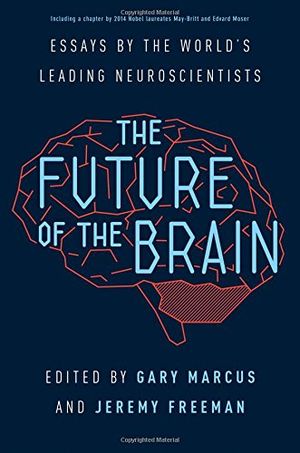
The Future of the Brain
/https://tf-cmsv2-smithsonianmag-media.s3.amazonaws.com/accounts/headshot/Sabar_copy.jpg)
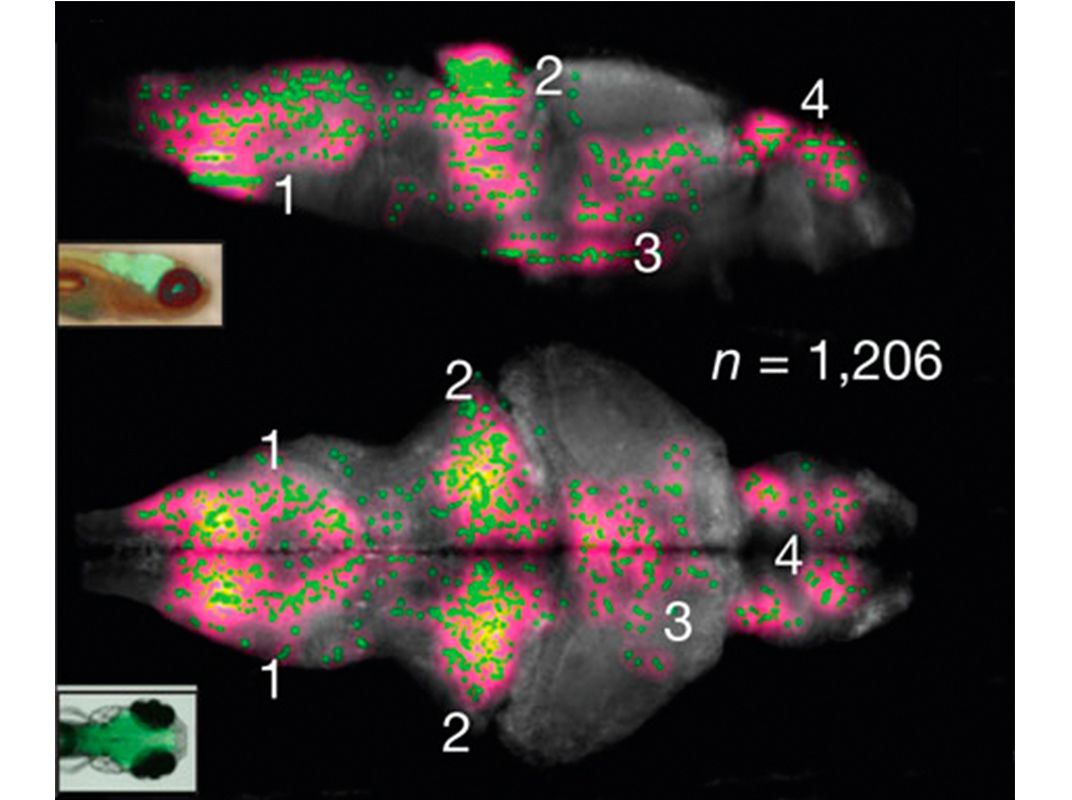
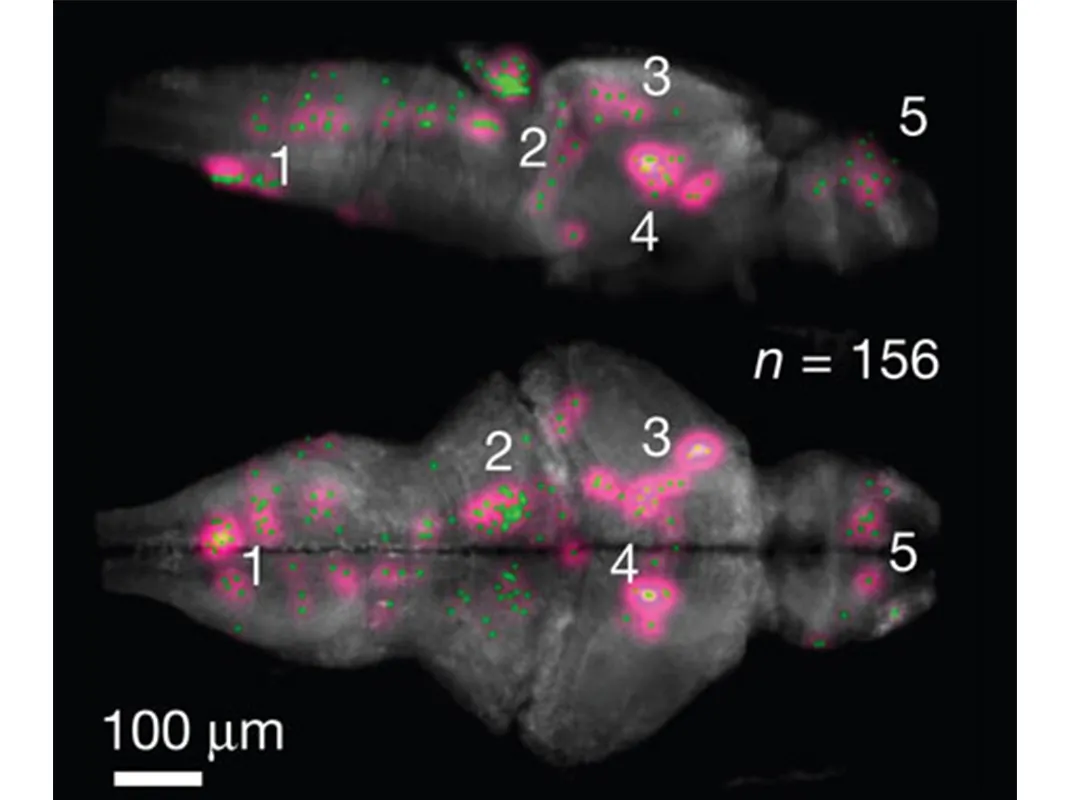
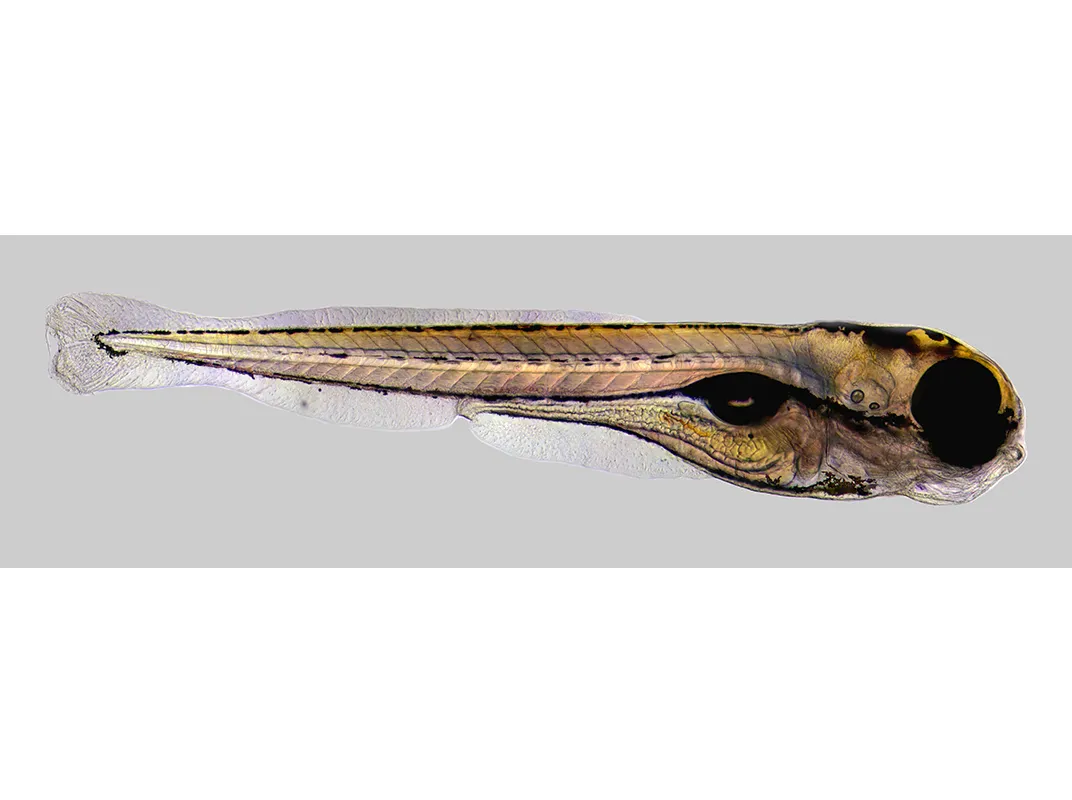
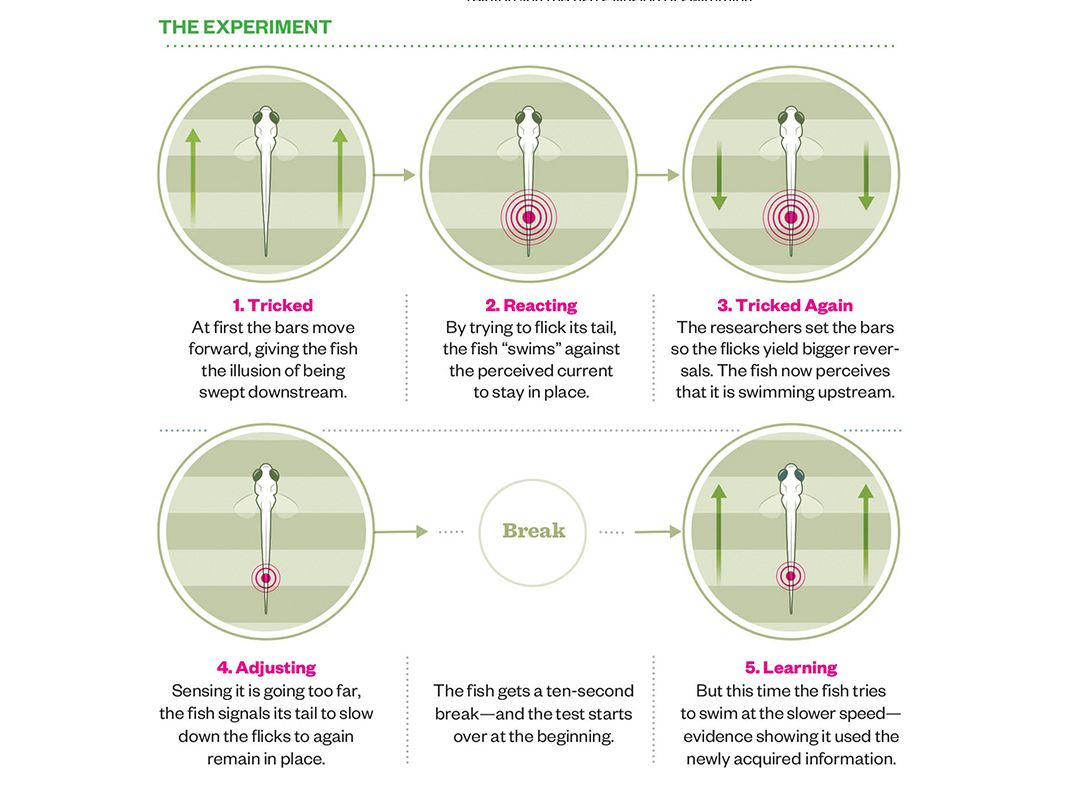
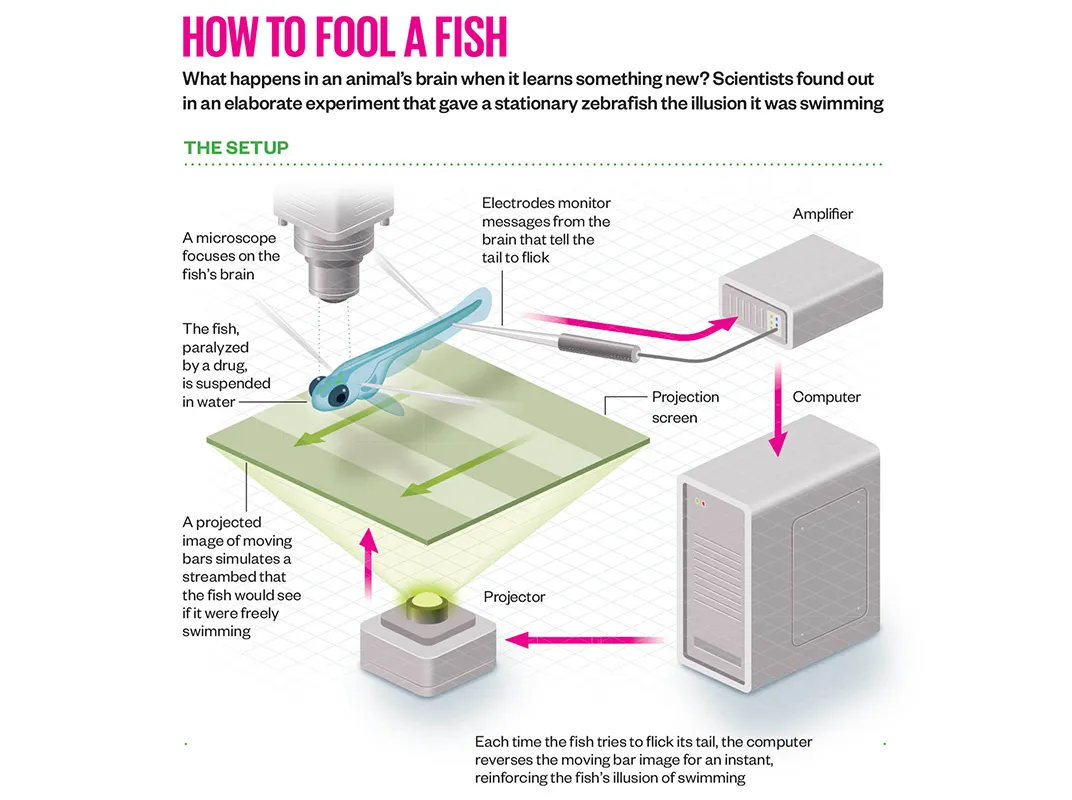
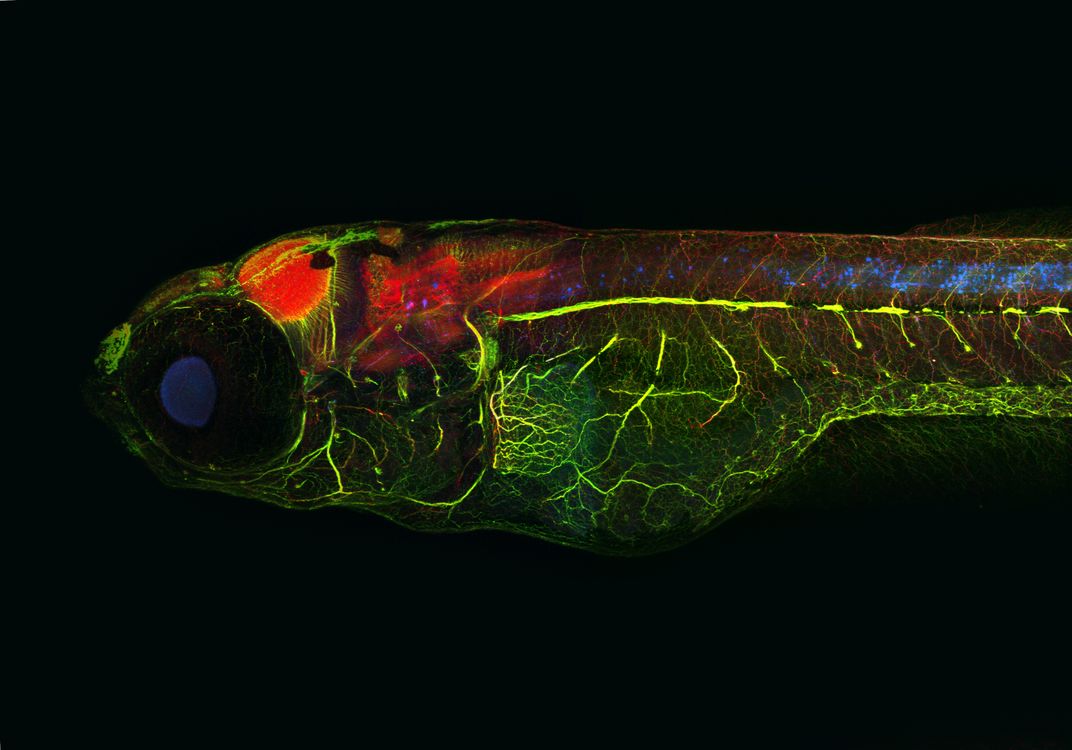
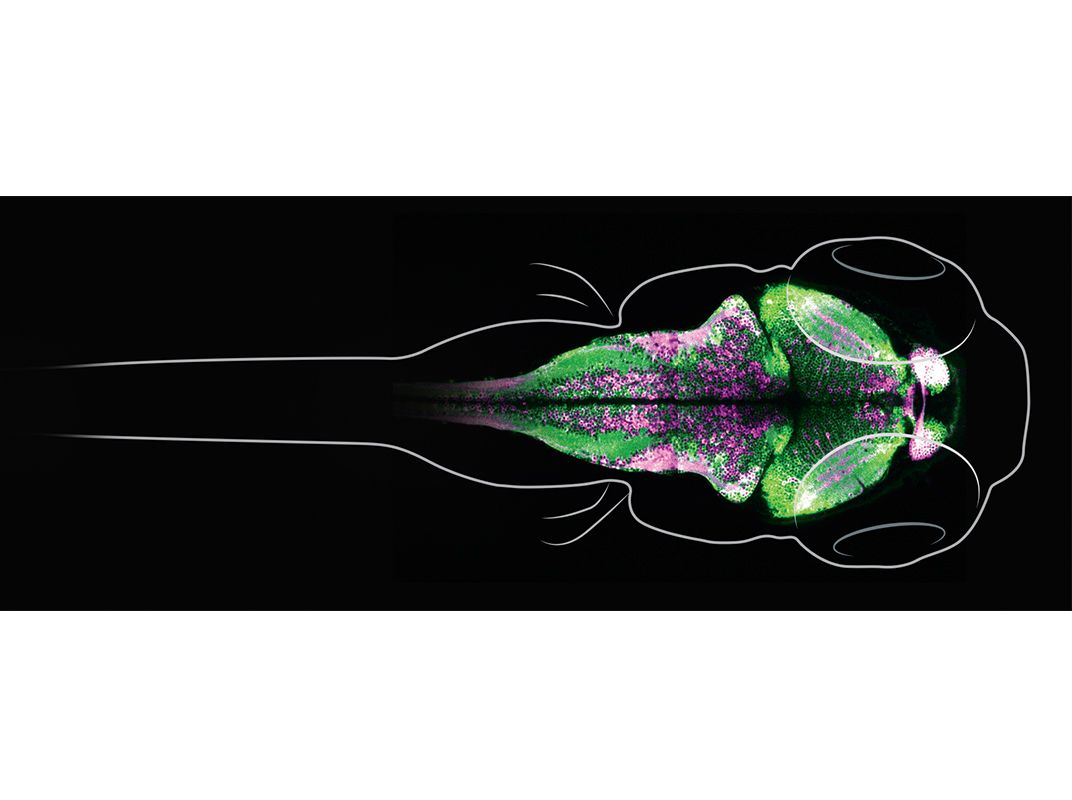
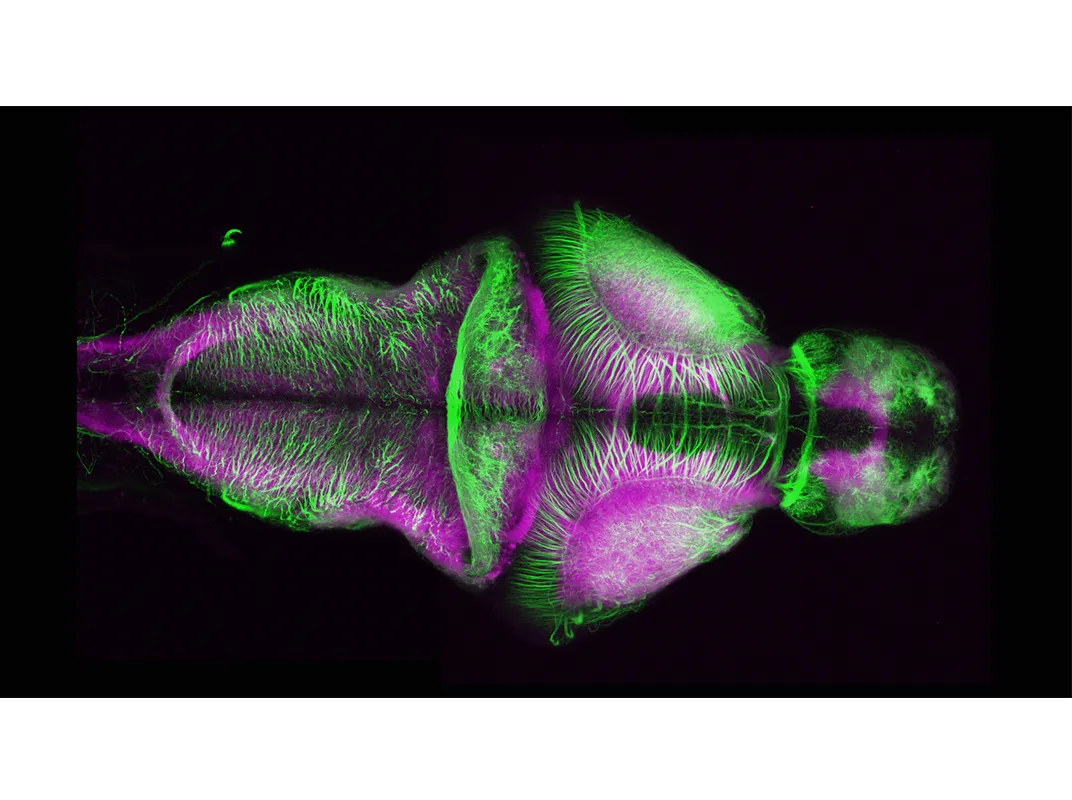
/https://tf-cmsv2-smithsonianmag-media.s3.amazonaws.com/accounts/headshot/Sabar_copy.jpg)